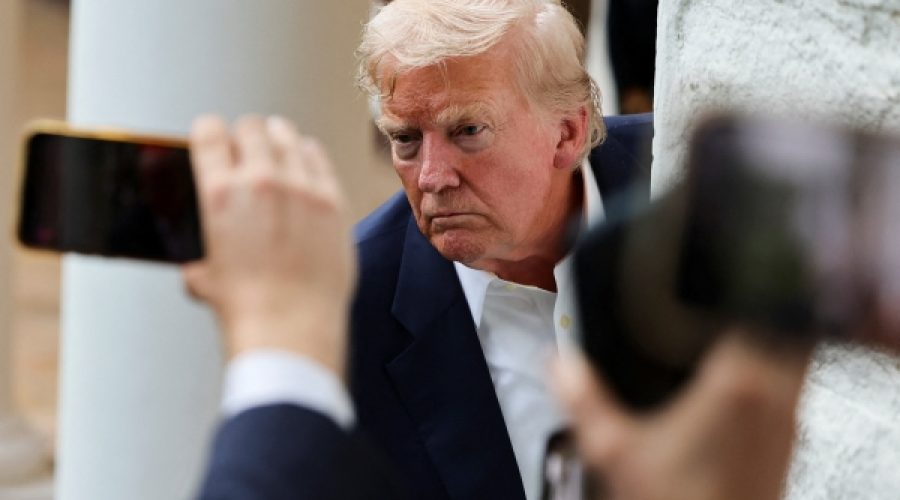Trump’s Trade War Winning Streak: What It Means for Investors and Businesses in Oman
WASHINGTON — Over the past six months, the United States has abandoned the longstanding global trade framework in favor of an untested and significantly different approach. Major economies, including the European Union and Japan, have reluctantly accepted higher tariffs on their exports, acquiescing to President Donald Trump’s demands to avert damaging trade wars and to potentially negotiate lower U.S. duties.
As key global players agree to deals featuring some of the highest tariffs in modern history, Trump’s vision for global trade is rapidly taking shape. This new reality leverages the U.S. economy, with other nations accepting tariffs ranging from 15% to 20% to maintain trade relations with the United States. Some sectors, such as steel, face even higher tariffs, particularly from countries perceived as adversaries, like China.
The results seem to support Trump’s assertion that tariff threats serve as effective bargaining tools. Furthermore, the subdued market reaction to 15% tariffs on Japan and the EU contradicts earlier predictions of widespread panic from the president’s more severe levies.
Nigel Green, CEO of deVere Group, described the EU agreement as “a reset, not a resolution.” He noted, “A year ago, markets would have recoiled. Today, they’re simply grateful it wasn’t worse.”
Despite what appears to be a political triumph for Trump, the economic ramifications remain uncertain. The administration is conducting an unprecedented economic experiment, deploying tariff rates unseen in the U.S. since the early 20th century. Such high tariffs are typically characteristic of developing economies shielding nascent industries, rather than established industrial powers like the United States.
Supporters of Trump argue that increased tariffs will encourage domestic manufacturing, boosting factory jobs while minimizing effects on businesses and consumers. The president also maintains that foreign governments, not American companies or consumers, will bear the tariff costs—contradicting longstanding research that shows Americans ultimately shoulder these expenses.
Clyde Prestowitz, founder of the Economic Strategy Institute and former U.S. government official, draws parallels between Trump’s trade policies and pre-1946 U.S. mercantilist strategies, as well as those of countries like China that have historically used protectionism to build trade surpluses and wealth. “It worked for England, the U.S., France, Benelux, Germany, Japan, Korea and all others who became rich,” Prestowitz said.
However, many economists predict that tariffs will drive up costs for imported goods, affecting businesses and consumers alike. This increase is expected to slow economic growth and potentially undermine Trump’s goal of revitalizing manufacturing. Recently, automakers such as General Motors and Volkswagen have reported losses exceeding $1 billion due to tariffs.
Diane Swonk, KPMG’s chief economist, emphasized the significance of the overall tariff increase, stating, “Even as these deals are being cut, the eventual tariff rate is likely to peak around 20%, which is up a lot from below 3.” She noted the delayed impact of tariffs, with effects typically taking six to 18 months to permeate supply chains, as was observed with the trade war against China starting in 2018.
Brad Setser, economist at the Council on Foreign Relations, agreed that tariffs are substantial enough to slow the economy and impact Americans noticeably but likely insufficient to trigger a recession. He predicted consumers would begin feeling the effects of 20% to 30% tariffs on goods like small appliances, clothing, and toys from Asian countries by fall. “It’s a policy that in most models would slow the economy, not stop the economy from growing,” he said.
Some analysts highlight that recent trade agreements have helped avoid imminent trade wars with major partners, though they believe the economic benefits remain limited. Stephen Olson, a former U.S. trade negotiator, described the U.S.-EU deal as “both highly protectionist and unapologetically mercantilist,” adding that while the EU managed the situation as well as it could, Trump shows little interest in maintaining open North Atlantic trade relations.
Trump’s trade reshaping remains ongoing. As of the most recent deadline, preliminary agreements are pending with trading partners representing 56% of U.S. imports, including Canada, Mexico, South Korea, Brazil, and India. Experts warn that current deals could unravel quickly due to Trump’s history of issuing new tariff threats and renegotiating signed accords. U.S. officials have indicated potential new tariffs on semiconductors and pharmaceuticals within weeks, which could further disrupt trade and strain relations.
While the U.S. economy is relatively less dependent on trade than others—trade accounts for about 25% of its economic activity compared to over two-thirds in Mexico and Canada—tariffs still raise costs for American businesses and consumers. This results in less capital for hiring, growth, and innovation, dampening consumer spending, a key economic driver.
Economists also express skepticism about tariffs achieving one of Trump’s central aims: reducing the U.S. trade deficit, which he views as evidence of unfair treatment. Setser suggested tariffs might affect trade balances with specific countries but are unlikely to significantly alter the overall deficit unless they induce economic contraction. Maurice Obstfeld, senior fellow at the Peterson Institute for International Economics, echoed this view, noting that trade deficits are more influenced by saving and government spending rates. He cautioned, “I doubt these deals will materially reduce the U.S. trade deficit, especially with the Trump administration having passed a fiscal bill that sharply increases the federal budget deficit in the near term.”
This article originally appeared in The New York Times.
Special Analysis by Omanet | Navigate Oman’s Market
The recent shift in U.S. global trade policy towards high tariffs marks a significant change in international trade dynamics, creating both risks and opportunities for Omani businesses. Higher U.S. tariffs could disrupt supply chains and increase costs for exporters and importers connected to the American market, urging Omani entrepreneurs to consider diversifying markets and strengthening regional trade ties. Smart investors should monitor these evolving trade agreements closely, as tariff volatility could impact sectors tied to U.S. imports and exports, while also presenting openings for domestic industries to expand amid changing global supply chains.



